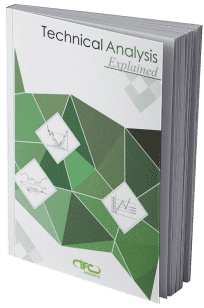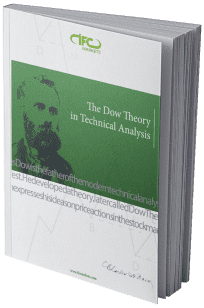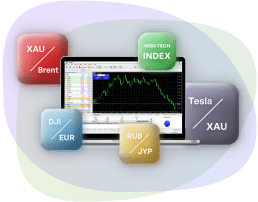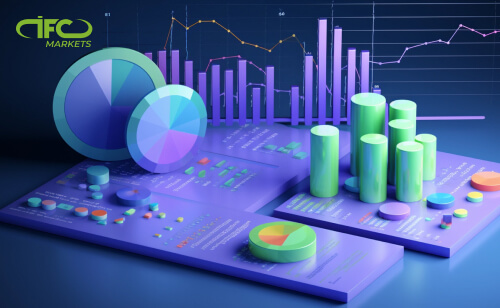- Education
- Forex and CFD Trading Books
- Forex Technical Analysis PDF
Forex Technical Analysis PDF

Welcome to the world of the financial market.
To succeed in this arena, one must grasp the basics of market movements and securities analysis. There are two primary methods used for analyzing securities and making investment decisions: fundamental and technical analysis.
Fundamental analysis takes into account macroeconomic factors to estimate the value of a security. On the other hand, technical analysis focuses solely on studying price movements in the market, aiming to understand market psychology. Some analysts even suggest that a more fitting name for this type of analysis might be "risk/return analysis" or "market psychology."
Technical Analysis Explained
| Author | Sona Matasyan |
| Language | English |
| Genre | Finance, Education |
| Educational use | Overview of technical analysis |
| Pages | 43 |
| Organization | IFC Markets |
| Price | Free |
| Book format | |
| Publish date | 2020 |

What is Technical Analysis:definition, philosophy, theories
- Trend In Terms of Technical Analysis: definition, types, classification, trendline, trend reversal, channel line, percentage retracements, price gaps
- Chart Construction: meaning, types, chart patterns, reversal chart patterns, continuation chart patterns, volume
- Technical Indicators: meaning, classifications, types
Technical Analysis Explained PDF
Brief Summary of Technical Analysis PDF
1. What is Technical Analysis?
Technical analysis is the study of market action primarily through the use of charts for the purpose of forecasting future price trends. By “market action” the following three main sources of information are implied: price, market volume, and open interest, the latter referring only to options and futures. The terms “price action” and “market action” are very often used interchangeably.
2. Trend In Terms of Technical Analysis
Trend represents one of the most essential concepts in technical analysis. All the tools that an analyst uses have a single purpose: help to identify the market trend. The expressions like “trend is your friend” or “Never buck the trend” are not used accidentally. The meaning they contain is more than deeper. So, it is worth properly understanding what the trend is and what type of trend is possible to differentiate.
3. Chart Construction
In technical analysis a chart is a graphical representation of price movements over a certain time frame. It can show security’s price movement over a month or a year period.
4. Technical Indicators
Technical indicators are calculations which are based on the price and volume of a security. They are used both to confirm the trend and the quality of chart patterns, and to help traders determine the buy and sell signals.
Indicators are used to identify trends, volatility, momentum and other aspects in a security to help in the trend’s technical analysis. They can be applied separately to form buy and sell signals, as well as can be used together, in conjunction with chart patterns and price movement.
Forex Technical Analysis PDF
In the technical analysis forex book you will be learning, technical analysis is a method used to study market action, primarily through the use of charts, to forecast future price trends. The primary sources of information used in technical analysis are price, market volume, and open interest in options and futures. It is based on three fundamental premises:
- Market action discounts everything: Technical analysts believe that all relevant information affecting the price of a market is already reflected in its price. The forces of supply and demand, as well as fundamental, political, economic, and psychological factors, are all represented in the market price.
- Price moves in trends: Technical analysis assumes that once a trend is established, it is more likely to continue in the same direction than to reverse. The goal of technical analysis is to identify trends early on and trade in the direction of those trends.
- History repeats itself: This premise suggests that past price movements and chart patterns tend to repeat in the future due to human psychology and market participants' behavior. Certain chart patterns are used to analyze market movements and predict future price movements.
Technical analysis is different from fundamental analysis, which focuses on studying the underlying factors that influence market direction. Fundamentalists try to understand the "why" behind price movements, while technicians focus on the "what" by studying price patterns and technical indicators.
There are three types of trends: uptrend (higher peaks and troughs), downtrend (lower peaks and troughs), and sideways trend (horizontal peaks and troughs). Support and resistance levels are key concepts in technical analysis. Support is the level where buying interest is strong enough to overcome selling pressure, while resistance is the level where selling interest overcomes buying pressure.
The historical roots of technical analysis can be traced back to Charles Dow and his Dow Theory, which aimed to identify long-term trends in stock market prices. Additionally, there are other theories in technical analysis, such as the Elliott Wave theory and Kondratieff Wave theory, which try to predict price movements based on wave patterns and long-term economic cycles.
It's worth noting that technical analysts may also use statistical methods and mechanical trading systems based on historical data and price patterns to generate buy and sell signals. Overall, technical analysis is widely used by traders and investors in various financial markets to make informed decisions about their trades and investments.
Technical Analysis for Beginners
Overall The book "Technical Analysis Explained" is a guide to using technical analysis to make investment decisions. You will be learning that technical analysis is a method of analyzing securities by studying their price movements. The book begins by introducing the basics of technical analysis, including what it is, why it is used, and its limitations.
It then goes on to discuss trends, which are the long-term movements of prices. The next two chapters are devoted to technical charts and indicators, which are the tools used to analyze price movements. The book concludes with a discussion of how to use technical analysis to make investment decisions.
Here are some of the key points of the book:
- Technical analysis is a method of analyzing securities by studying their price movements.
- Trends are the long-term movements of prices.
- Technical charts are visual representations of price movements.
- Indicators are mathematical tools used to analyze price movements.
- Technical analysis can be used to make investment decisions.
Here are some additional details from the book:
- Technical analysis is based on the principle that past price movements can be used to predict future price movements.
- There are two main types of technical analysis: trend analysis and pattern analysis.
- Trend analysis looks for the long-term direction of prices.
- Pattern analysis looks for specific patterns in price movements that can signal future price movements.
- There are many different technical indicators that can be used to analyze price movements.
- Technical analysis is not a guaranteed way to make money in the markets. However, it can be a valuable tool for making informed investment decisions.
Traders often search for a technical analysis forex PDF download to enhance their understanding of market trends and price patterns, we have one here for you, for free.
Technical Analysis and Trading Books (PDF)











